Tabula Rasa by artist Alex Coma, at Galerie Popop July 18-24, 2022
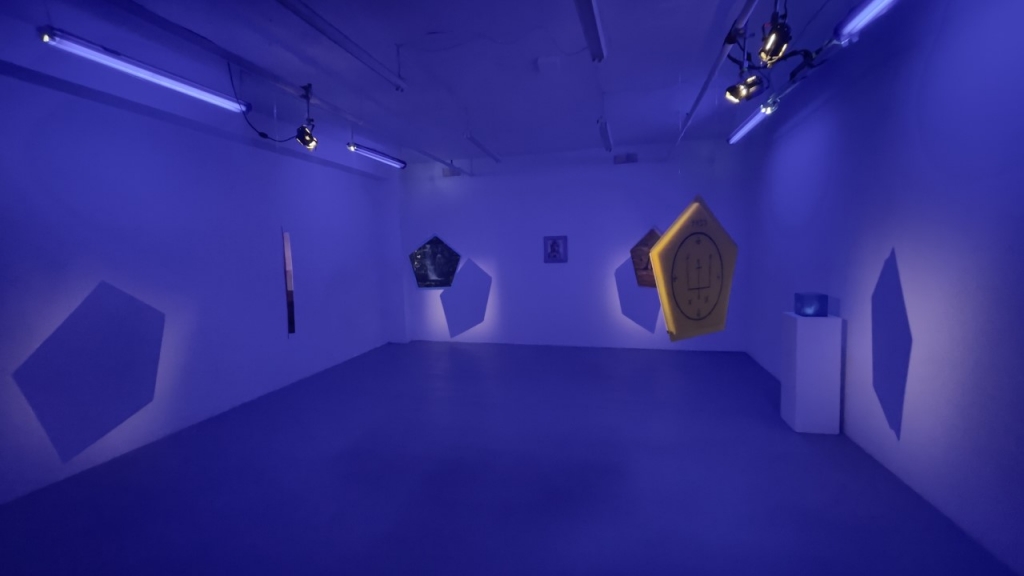
In Tabula Rasa, artist Alex Coma sets the scene of the art gallery as a sacred space for ritual. In the age of capitalism the marketplace is often presented to be our temple, and gallery spaces often serve such ends. Here, as throughout the history of art, we have spiritual intent taking precedence. Entering the exhibition, one is greeted by a pleasant violet glow cast on the majority of works from black lights, giving the exhibition an ethereal presence and a sense of altered space and perception. Hanging in the centre of Galerie Popop were four pentagonal-shaped canvases, with esoteric images on both front and back. Stepping into the middle of the quartet, one finds landscape paintings rendered with romantic and atmospheric detail, pertaining to the four elements. Upon closer inspection, the faint traces of a pentagram and magical symbols can be seen drawn under the surface of the oil painting. On the reverse, the canvases are topped with Hebrew letters, and underneath, various symbols and magical sigils. Each canvas is oriented to a direction, and represents not only an element, but an archangel. They are the visual representations of an old ritual called the Lesser Banishing Ritual of the Pentagram, more on that in a moment.
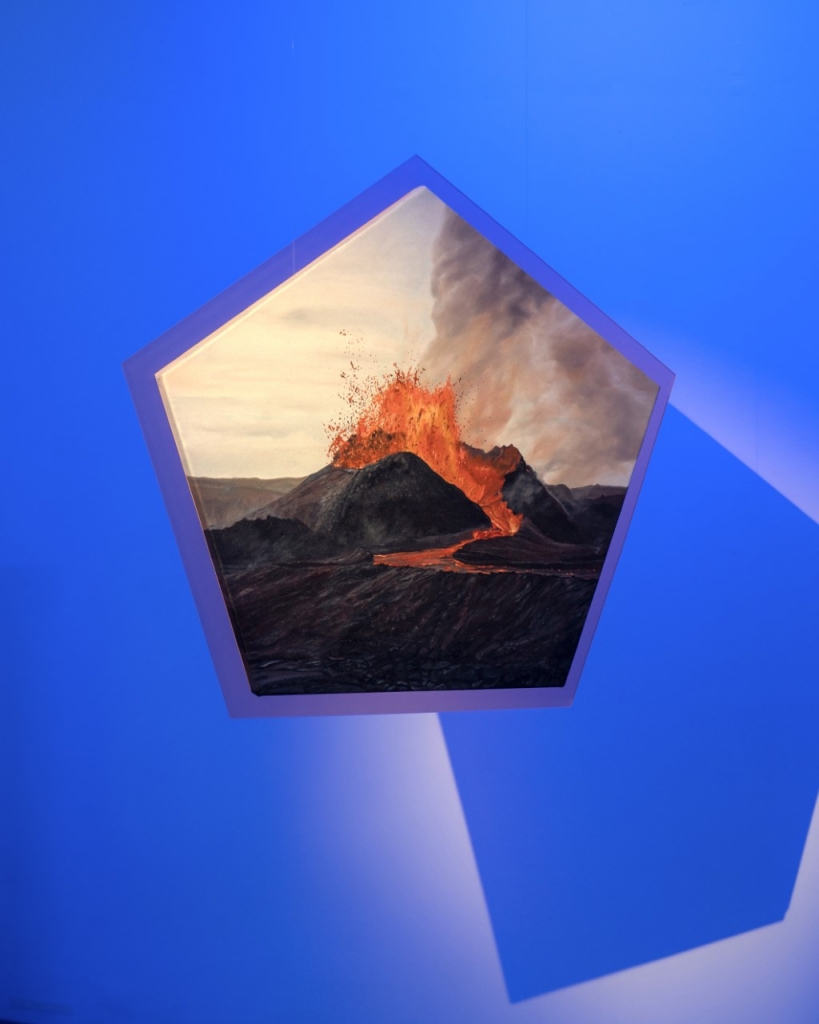
Alex Coma is an emerging artist from Granby, Quebec, currently residing in Montreal but soon to head off to Spain to work on other spiritual and artistic projects. After receiving his BFA from Concordia in 2014, he had a solo show at Livart in 2018, another AVE Gallery in 2019, among others. He has worked in painting, photography, sculpture, and installation. Coma’s work is diverse in scope, mysterious, dark and rich in mood, with a sense of expansive peace, hope, and transformational potential.
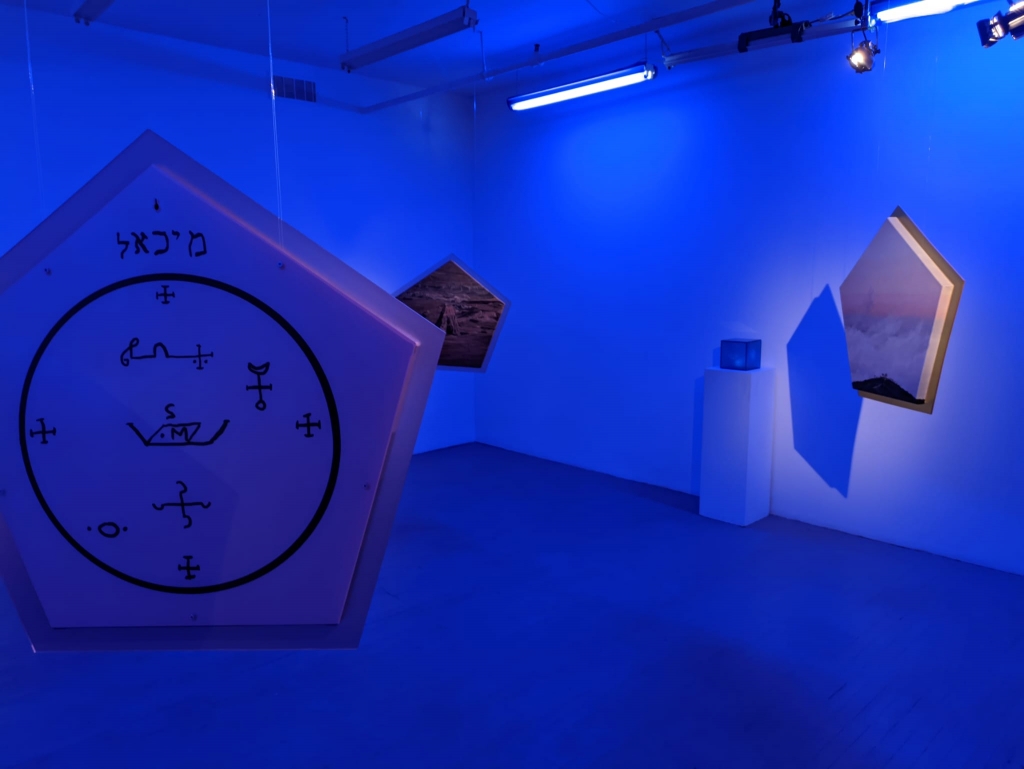
Near the entrance the gallery was a series of casually displayed sketches, Coma’s earlier works on paper, which appear to be automatic drawings on spiritual themes. He says these indicate his former self. The purpose of this ritual, to the artist, is to transform the intellect or personality, and the journey of the exhibition follows the ritual’s stages. Turning to the right, there is a large painting on unstretched dyed linen that consumes a corner of the gallery, lit up by projected fire. This is the opening segment of the ritual, in which the magician visualizes himself growing bigger than the earth, then the solar system, and eventually feeling the entire universe inside him. To the left is our massive sun, sending off a huge solar flare in the direction of the earth and moon, which are all painted to scale. Sacred geometry and the proportions of the planets in relation to each other are important to the artist, as well as the connection of the macrocosm of the cosmos to the microcosm of the human form. Before this fabric, a star lies on the ground upon a block, and upon the star is a burnt substance, perhaps an offering.
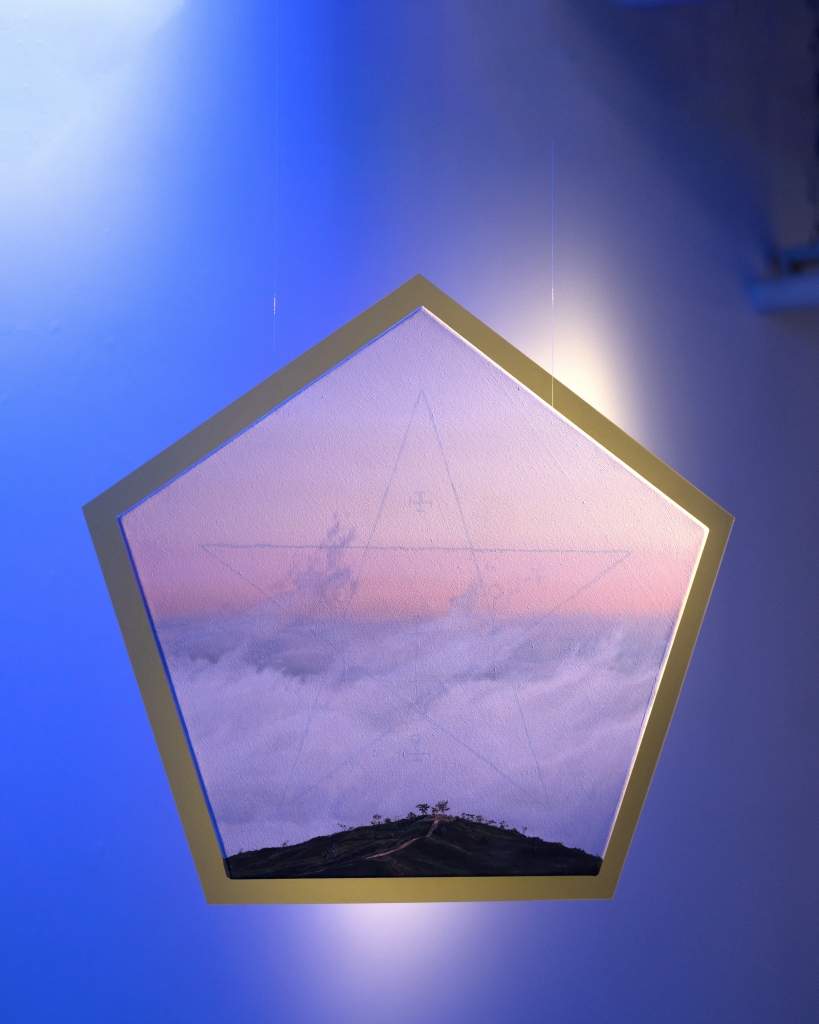
Tabula Rasa is an installation set up to reflect the ceremonial magic ritual called the Lesser Banishing Ritual of the Pentagram, originally created by the occult Order of the Golden Dawn, and one of the most widely used rituals used in western magic to this day. The configuration of the canvases are meant to aid in Coma’s spiritual practice, as this ritual is said by the artist to purify the intellect and the personality. The practitioner of this ritual traditionally positions themselves in orientation to each direction, draws a pentagram in the air as an act of cleansing and protection. The ritual also uses the Qabalistic cross, drawing on Jewish mysticism, and uses the names and sigils of the archangels which correspond to each element. Coma says that the paintings serve as a visualization aid to his spiritual practice.
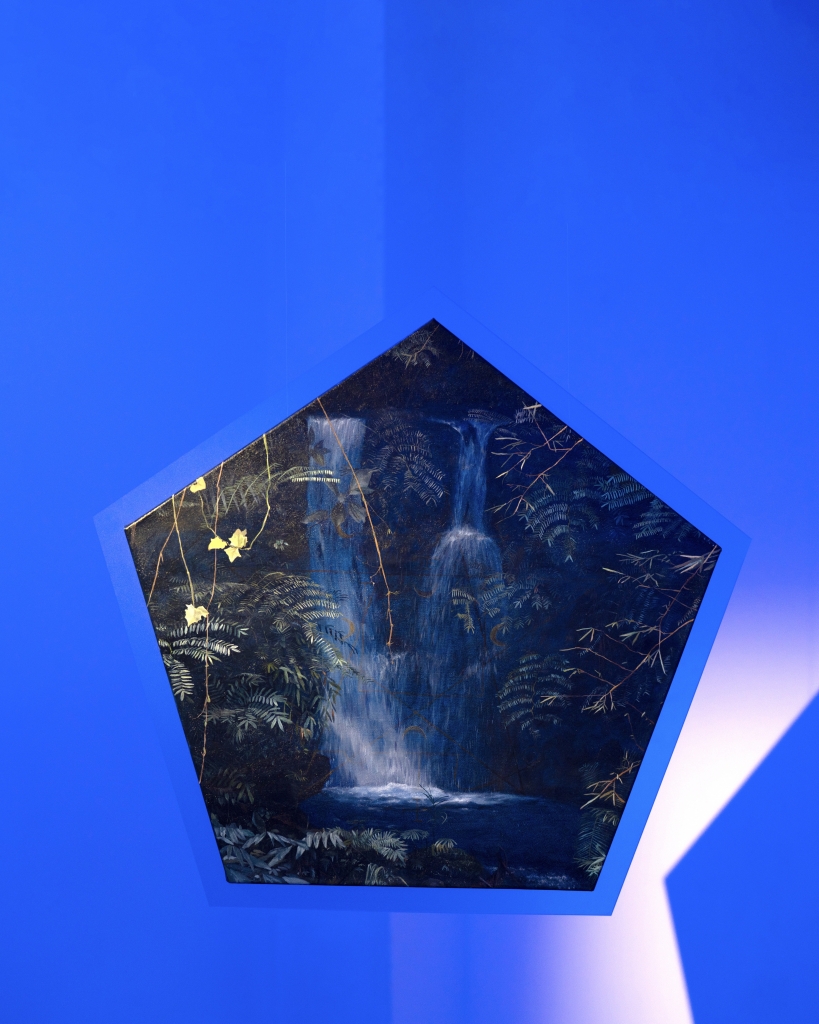
The purpose of this ritual is self-purification, protection, and ridding one’s environment of negative forces or energies. Each canvas represents a direction, and an element. For air, we have a pink sunrise or sunset landscape, seen from atop a mountain and just above wispy clouds. Representing water, we find a nocturnal scene of great delicacy with gentle waterfalls and tree branches and leaves. For fire, we see a dynamic erupting volcano painted in creamy yellows and smoky greys, with bold orange lava. Lastly, for earth, Coma has painted a desert landscape with a simple earthen temple, shaped something between a pyramid and an obelisk, with an entry door.
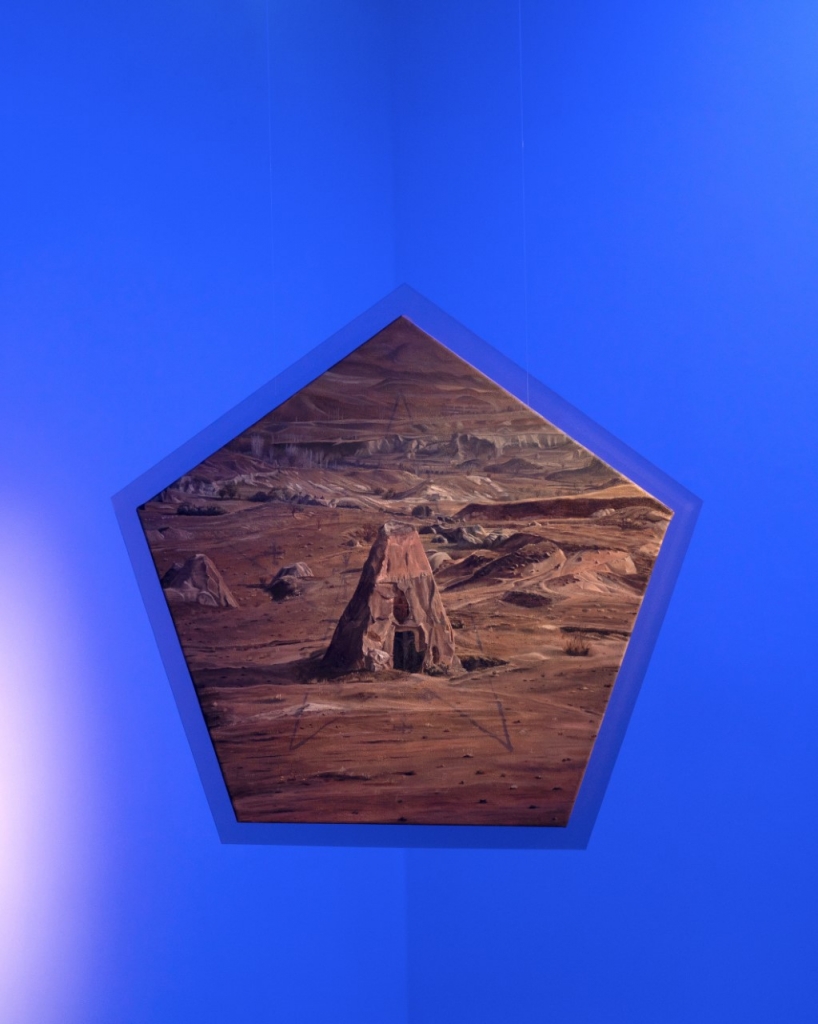
Other works that stand outside the sacred space of the hanging pentagons are a rendering of a man’s blue eye (presumably the artist’s eye surveying the scene), a figure of a woman rendered in an intuitive, outsider art style, which Coma says was done while connecting to his inner divine feminine. We can also find a blue plastic box inscribed with an eye and symbol of Aries (the astrological Sun sign of the artist).
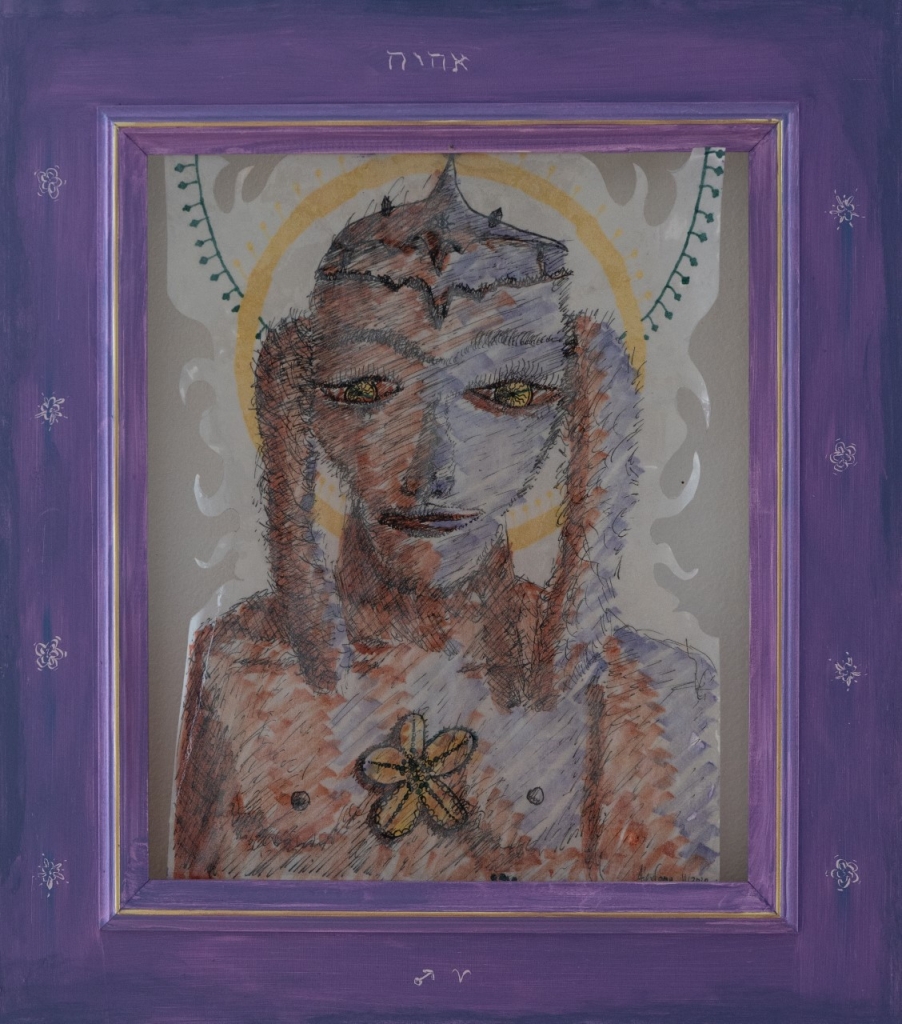
The strongest work in the show, to me, is one of Alex Coma’s spiritual landscapes, a detailed painting of a tower that resembles a mystical rocket, presiding over a seaside forest landscape. The style calls to mind landscape painters such as Hudson River painter Thomas Cole, or Constable, but it is considerably weirder and more intriguing. The tower is burning at its base, and appears to be futuristic in nature, with glass or metal beams but it also resembles the stone towers of a castle. At the top of the tower we see symbols such as a glowing crescent moon, a blue cube, and a six pointed star. This image calls to mind the Tower card of the Tarot, which signifies abrupt shifts and change, and the destruction that often devastates before the new can be formed. Quebec is a place that suffered at the hands of religion though the oppression of the church for a long time. As such, many in this province, intellectuals and artists especially, I have found, are atheists and scorn spirituality as well as religion as childish nonsense, or worse. It is refreshing to see a Quebecois artist such as Alex Coma bringing life into mystical themes and ideas, and showing that it is possible to explore such territories anew with fresh, young eyes, bringing us a sense of hope and possibility which we all need right now.
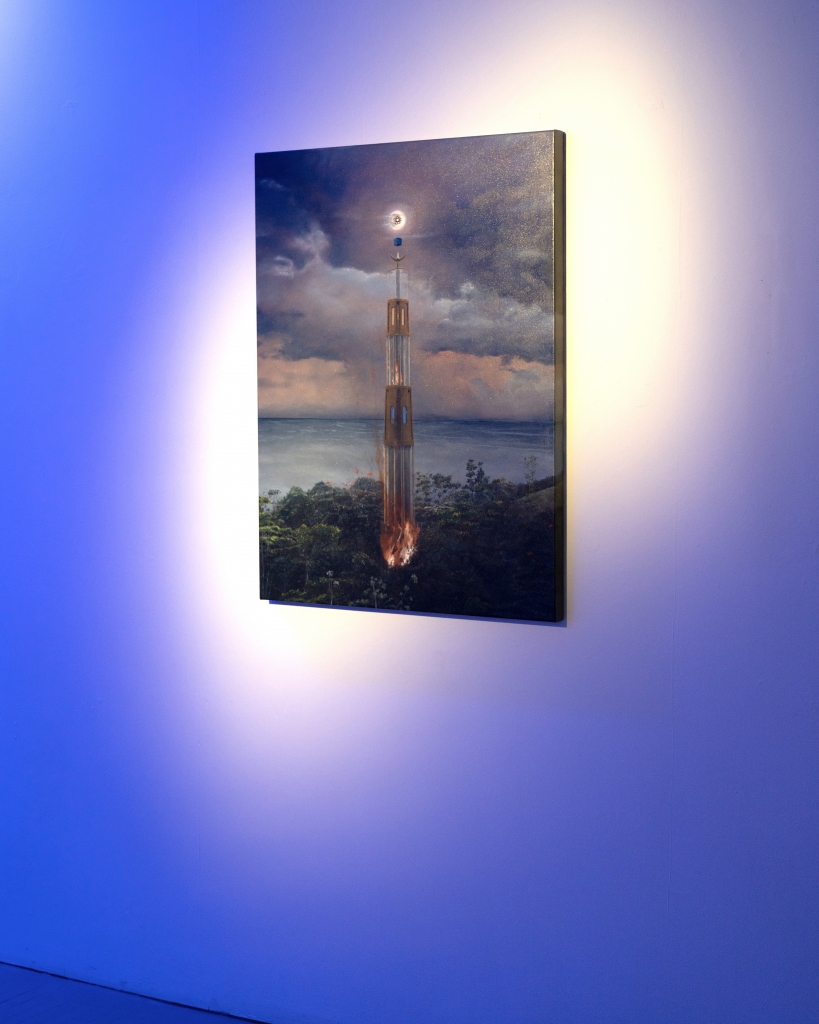
Alex Coma’s website can be found here


